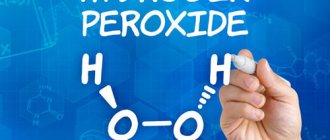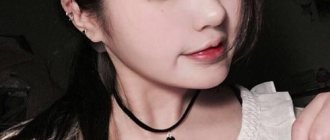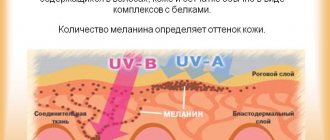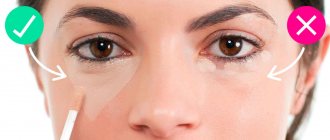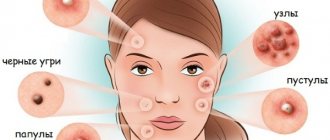How does peroxide work?
Hydrogen peroxide (peroxide) is a well-known antiseptic that is used in cosmetology and is a component of many masks. The recipes are convenient because they can be used at home. If you decide to test whether hydrogen peroxide helps get rid of acne on your face, you should adhere to certain rules. Remember that an overdose can have unpleasant consequences.
Peroxide is a colorless liquid that has a “metallic taste.” It can dissolve in water and alcohol.
The drug has antiseptic properties and belongs to the group of antioxidants. When applied to the skin, peroxide mechanically cleanses and inactivates organic substances in the form of proteins, blood, and pus.
Upon contact, abundant foaming occurs, due to this, blood clots form and the bleeding of small vessels stops. Peroxide is indicated for inflammatory diseases of the mucous membranes, purulent wounds, capillary bleeding, nosebleeds, stomatitis, sore throat, tonsillitis, and gynecological diseases.
Contraindications to treatment are individual intolerance, liver disease, hyperthyroidism. Allowed for use during pregnancy and breastfeeding. When treating the skin, side effects such as burning and an allergic reaction are possible.
Contact with skin causes the peroxide to break down into oxygen and water. This causes an oxidation reaction to occur, which kills germs and lightens the skin on your face several shades. Thanks to this property, hydrogen peroxide has proven itself in cosmetology. It helps to cleanse oily and problematic skin, eliminate acne, blackheads, purulent inflammations, lighten freckles and age spots, and also whiten the skin on the face at home.
However, it is worth noting that oxidation affects not only sick cells, but also healthy cells. When the solution comes into contact with healthy areas, the skin on the face turns white. This indicates a burn. The skin needs a long time to recover, so anti-acne masks should be used infrequently and only in dissolved form.
Recommendations for correct use
When planning to treat your skin with a solution of hydrogen peroxide, you must follow certain rules to help increase the effectiveness of the drug:
1. Use only the permissible concentration of the product: in the form of a cream - up to 1%, and for a “pure” liquid form - no more than 3%. You can purchase the drug at any pharmacy, but you need to study the label with special attention, because the increased concentration must always be brought to the recommended proportion by diluting with water. In the case of cream, you must strictly follow the instructions for the amount and frequency of use.
2. Before the procedure, thoroughly wash the skin with warm water and neutral soap - without brushes or special gloves. Then the surface to be treated is completely dried. Thus, the pores become more susceptible to further exposure, without compromising their integrity, and dry skin absorbs peroxide more richly than wet skin.
3. Before treating the entire problem area, it is better to try a small amount of the product on a small area of skin to make sure there is no excessive irritation or drying out. Apply the solution with a cotton swab or swab, avoiding healthy areas. Afterwards, let it soak in for 5-7 minutes.
4. Use the product no more than once a day. When fighting acne, it is not necessary to wash off the product.
5. After absorbing the peroxide, apply a high-quality moisturizer that does not contain oils, because the effectiveness of the procedure lies in the elimination of excess oils from the surface of the epidermis. Taking care of your skin in this way will ensure that there is no excessive dryness and will contribute to its smoothness and softness.
By following the recommendations outlined, you can always have confidence in the expected result. Reviews from many patients indicate that hydrogen peroxide not only helps care for the skin, but is also a powerful remedy for getting rid of acne. Having a low cost and high efficiency, this drug has become popular due to its antimicrobial properties - both in medicine and in cosmetology.
Tags: acne
Market Analytics
- Black Lives Matter movement: reaction and consequences for the beauty industry
- COVID-19 is changing the rules of the game in the cosmetics market
- Beauty of the future: cosmetic innovations 2020
Convenient search for beauty salons on our website
Beauty salons in Moscow Beauty salons in St. Petersburg Beauty salons in Ekaterinburg Beauty salons in Novosibirsk
Latest blog posts on our website
- Naturecream / Apricot kernel oil for face
- Naturecream / MATRIXYL3000 - the best skin elasticity stimulator
- Naturecream / SPF in Natural Oils
- Naturecream / Geranium (Pelargonium) oil for skin health and beauty
- Prostye-sovety / Save on a beauty salon: procedures that can be done at home
- Naturecream / Growth Factor - brings back youth?
- Oksana-Lezina / 3 effective abdominal exercises from a fitness instructor for beginners
- Prostye-sovety / Making perfect curls at home
- Prostye-sovety / Which hair removal method to choose
- Naturecream / Wrinkles Puppets
Latest forum topics on our website
- Natalya / How to properly make a gelatin mask?
- Mrs._Smith / Badly sunburned! What to do?((
- Ice / Is it necessary to combine fitness classes with a diet?
- Antonova / What can be used for hair loss?
- Radio operatorKat / Who was on a protein diet?
Other articles in this section
| Treatment of acne with sulfur Sulfur has been used for decades to combat acne of various origins. The component is popular due to its effectiveness and possibility of use for the treatment of sensitive skin. Usually, treating acne for people with this type of skin is a real problem: most medications cannot be used for fear of causing even more irritation. Sulfur soothes the skin and heals ulcers. |
| Pimples and marks after them. Get rid of and forget We would all really like to be liked by others. Especially the opposite sex. Whatever we say about individuality, we know that being liked by people is equal to achieving a lot. |
| Black face mask for blackheads The cosmetology market offers a wide range of facial skin care products. However, the most unusual of them is black for the face from blackheads. This product can be bought, or you can make it yourself at home. This article will tell you how effective a black mask is and how to make it at home. |
| Pimples, blackheads and comedones in questions and answers. Part 1 The first part of a collection of frequently asked questions and answers about acne, compiled by American doctor Mark Lee. Causes of acne, methods of treating them, etc. |
| Peeling for acne Peeling for acne is an effective procedure. Acne peeling is carried out in courses to get a noticeable result. But before you buy a peeling product, take the time to study the features of peeling cosmetics and procedures. The correct choice of drug plays a decisive role in obtaining the desired results. |
| Hormone therapy in the treatment of acne Antiandrogen therapy is considered the only etiological method of official medicine used in the prevention and treatment of acne. The main reason for the formation of inflammation is increased secretion of sebum, which is regulated by sex hormones. Antiandrogen treatment, acting directly on these hormones, can reduce its production by 12.5-65% |
| Use of Acyclovir for the treatment of herpes acne The drug Acyclovir is intended to eliminate herpes rashes. Pharmacies have several variations of this remedy - Atsik, Gerpevir. This drug is effective in the first stage of the disease. Despite the fact that treatment with Acyclovir can be carried out even at home, it is better to agree on the form, frequency of administration and dosage of the drug with the therapist. |
| Acne - what tests to take, which doctor to see In this article we will look at what tests you need to take if you have acne, which doctor to see so that the correct treatment can be prescribed. |
| How to get rid of acne on the face Rashes that appear on the face - papules (nodules), pustules (ulcers), milia (look like white dots). They are eliminated mechanically, medicinally, using hardware. Treatment is divided into professional, which is performed by a specialist, and at home. When determining how to get rid of acne on the face, you should take into account the cause of the defects, the type and general condition of the skin, age, and the presence of chronic diseases. |
| Acne with PMS or how the premenstrual cycle affects acne Are you familiar with this situation: as soon as your period approaches, acne inevitably appears on your flawless skin, and this happens again and again? Is premenstrual acne possible? |
Using hydrogen peroxide against acne: benefits and harms
Like any other product used in cosmetology, hydrogen peroxide has its advantages and disadvantages. The benefits of peroxide include:
- with proper use of the product, the skin on the face is completely cleared of blackheads and pimples;
- the skin on the face brightens and acquires a healthy color;
- dark spots from acne (post-acne) disappear;
- Facial hair is lightened.
The disadvantages of peroxide include the following:
- the drug can burn the skin, so it must be used with extreme caution;
- in some cases, an allergic reaction may occur;
- may cause excessive dryness and flaking of the skin.
The side effects of using hydrogen peroxide for facial acne have not been fully studied. However, many scientists believe that the solution only helps in the initial stages.
With prolonged use, it can cause skin aging. This is due to the fact that peroxide, together with bacteria, destroys healthy areas, which is why the skin is deprived of its natural protection.
Moreover, the solution can lead to allergic reactions, so before using masks you should consult a dermatologist.
Instructions for use
If you are planning to get rid of pimples and acne on your face using peroxide, you should know some rules:
- For external use, a weak three percent solution is used. Dilute with tonic or add to the mask in a ratio of no more than 1:5;
- The frequency of using peroxide for the face is twice a week, the duration of the procedure is no longer than 15 minutes;
- When fighting severe acne, peroxide should be applied pointwise, without affecting healthy skin;
- At the end of the procedure, be sure to wash with warm water.
If you follow all the recommendations, peroxide will help dry out the rashes and speed up their healing.
Peroxide masks
The following recipes have proven themselves to be the best in the fight against acne.
- Recipe No. 1
Suitable for normal to oily facial skin.
To prepare you will need:
- 1 tablespoon cottage cheese;
- 5 drops of peroxide;
- 1 chicken egg.
Mix all ingredients thoroughly and spread the mixture on your face using a cotton pad. Leave the mask on for 15 minutes. Then rinse it off with warm water and use a moisturizer. The procedure allows you to dry out the rashes and slightly whiten the skin.
- Recipe No. 2
This recipe is suitable for people who are not prone to allergies.
Ingredients:
- 1 tablespoon honey
- 3 drops peroxide
- 1 teaspoon aloe juice.
Mix the ingredients and apply directly to the affected areas. After 15 minutes, wash with cool water.
- Recipe No. 3
Mix 2 tablespoons of yeast with 5 drops of peroxide. As a result, you will get a mass similar to sour cream. Apply the mask in 2-3 layers on your face and leave for 15-18 minutes.
- Recipe No. 4
This recipe helps in the fight against acne and blackheads. You will need 1 teaspoon of white clay, a few drops of peroxide. Mix the ingredients to form a liquid mass. Apply a thin layer of the product to the inflamed areas, rinse after 15 minutes.
- Recipe No. 5
To prepare you will need:
- 2 tablespoons of warm milk;
- 2 tablespoons steamed oatmeal;
- 4-5 drops of hydrogen peroxide.
Mix these ingredients thoroughly until smooth. Apply the product to your face and leave for no more than 20 minutes. After this, wash your face with warm water. Due to the milk in the mask, the skin on the face will receive additional hydration and nutrition, and oatmeal helps eliminate oily shine. You should not use this recipe more than once a week.
Precautionary measures
To obtain the desired cosmetic effect and get rid of skin problems, you should use hydrogen peroxide in accordance with the following rules:
- Only a 3% solution of the drug is suitable for use on the skin of the face (products with a higher concentration of peroxide will lead to serious chemical burns).
- Before using the solution, you should test for an allergic reaction (apply peroxide to a small, inconspicuous area of skin, such as the crook of your elbow or the back of your hand). If redness, swelling or rash occurs, do not use peroxide.
- In its pure form, use the composition exclusively on the spot, applying it to acne with a cotton swab. Acne, freckles or age spots.
- Observe the frequency of use of the product (do not apply masks with peroxide more than once a week, the course of treatment should not exceed one month, after which you should take a break for 3-4 weeks).
- Do not use the solution on skin that is too dry and prone to irritation or peeling, or use additional ingredients to soften the skin (honey, vegetable oils, egg yolks).
- Apply masks with peroxide to the face in as thin a layer as possible, regardless of consistency.
- Do not keep the mask or products containing peroxide on the skin for more than 15 minutes. After the required time has passed, rinse the skin thoroughly with running water.
- If burning or other undesirable reactions occur on the skin after applying peroxide or masks with a solution in the composition, immediately rinse the skin and apply a moisturizer.
- Do not allow the product to come into contact with delicate areas of the skin of the lips and eyelids, or the mucous membranes of the eyes.
Important! Hydrogen peroxide, when applied to the skin, causes an aggressive chemical oxidation reaction, so its uncontrolled use and non-compliance with safety measures can cause serious burns and excessive dryness of the skin.
By following these recommendations, noticeable improvements in skin condition can be noticed after the first course of procedures:
- skin lightening;
- reduction of post-acne marks;
- reduction of pigmentation;
- narrowing of pores;
- reducing the number and size of rashes.


